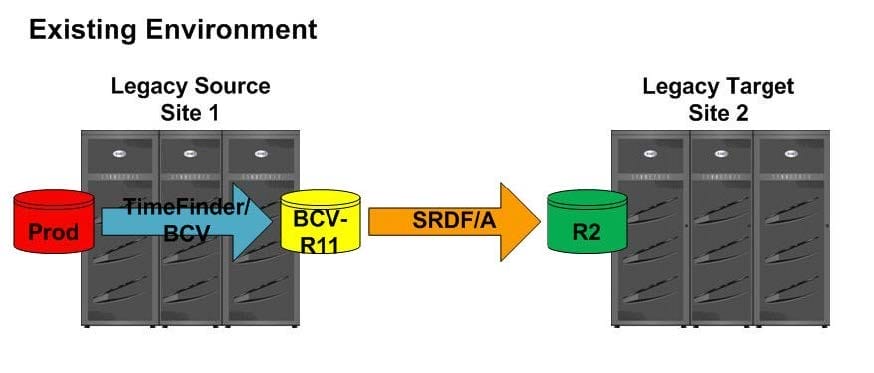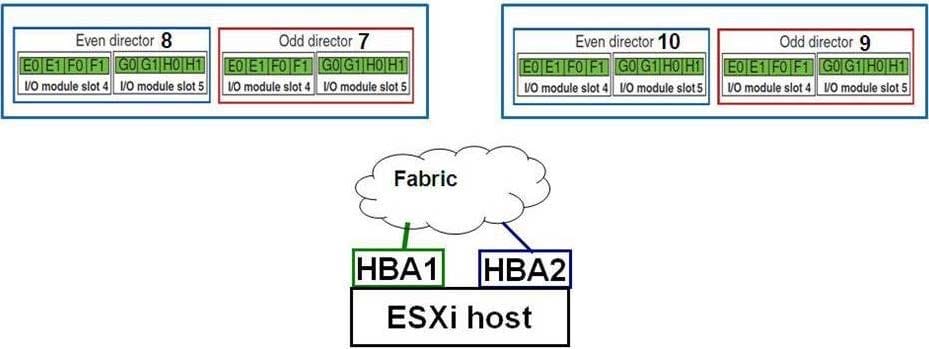E20-326 Online Practice Questions and Answers
What is the minimum recommended amount of CLARiiON performance data that should be used for Tier Advisor analysis?
A. 4 hours
B. 5 hours
C. 1 day
D. 1 week
You are analyzing performance data from a Symmetrix DMX populated with Fibre Channel (FC) drives with the intention of upgrading a customer to a VMAX. An analysis of the data with Tier Advisor yields a recommendation that the storage be allocated in 3 tiers, EFD, FC and SATA. What is a valid Tier advisor recommendation?
A. 10% EFD, 75% FC and 25% SATA
B. 100% EFD, 100% FC and 100% SATA
C. 5% EFD, 90% FC, 20% SATA
D. 3% EFD, 70% FC and 27% SATA
What are the generally recommended RAID protections for Enterprise Flash Drives (EFD), Fibre Channel (FC) and Serial Advanced Technology Attachment (SATA) tiers?
A. · EFD - RAID 5 (3+1) · FC - RAID 1 · SATA - RAID 6(6+2)
B. · EFD - RAID 1 · FC - RAID 5 (3+1) · SATA RAID 6 (6+2)
C. · EFD - RAID 6 (6+2) · FC - RAID 1 · SATA RAID 5 (3+1)
D. · EFD - RAID 6 (6+2) · FC - RAID 5 (3+1) · SATA RAID 1
How is Open Replicator licensed?
A. Licenses are per-system and are priced by the raw capacity of the array. This is required for the control array only.
B. Licenses are per host and are priced based on an agent license that is entered via command line.
C. Licenses are per-system and are priced by the raw capacity of the array. This is required for both the remote and control arrays.
D. Licenses are per host and are priced based on the amount on the total amount of storage capacity that is mapped to an FA port.
How many additional SDDF sessions are used for an Open Replicator incremental push?
A. 1
B. 2
C. 3
D. 4
In Enginuity 5671 and earlier, how does SDRF/S behave when multiple writes to a device are received?
A. Second write waits while first write is acknowledged.
B. Third write waits while second write is acknowledged.
C. 8 Concurrent writes are supported on a single device.
D. 4 Concurrent writes are supported on a single device.
Refer to the exhibit.

A customer has a legacy DMX-3 at Site 1, where a BCV-R1 copy is taken of the production volumes and then replicated to another DMX-3 at Site 2 via SRDF/A. The customer will replace the legacy DMX-3 arrays at both sites with new VMAX arrays.
The customer wants to enable concurrent SRDF on the Site 1 SRDF source volumes, to maintain disaster restart protection between the legacy DMX-3 arrays and migrate the legacy DMX-3 at Site 1 to the new VMAX array. What should you advise the customer?
A. Concurrent SRDF migration is not supported for this configuration.
B. Enable concurrent SRDF using SRDF/A from the BCV-R1.
C. Host level migration is the only migration option for this configuration.
D. Enable concurrent SRDF using SRDF/S from the BCV-R1.
What is a supported mode for disk based Cascaded SRDF?
A. First leg - SRDF/S, Second leg - SRDF/A
B. First leg - SRDF/A, Second leg - SRDF/A
C. First leg - SRDF/S, Second leg - SRDF Adaptive Copy Write Pending Mode
D. First leg - SRDF/S, Second leg - SRDF/S
A customer has a pair of VMAX arrays configured to replicate thin devices at one site to thin devices at another site using SRDF/A. The customer wants to implement TimeFinder/Snap replication of the R2 device on the target array and asks you to confirm this is a supported configuration. What do you advise the customer?
A. No, it is not supported.
B. It is supported only if the precopy option is used.
C. Yes, it is supported.
D. It is supported only if composite groups are used.
Which workload is an ideal candidate for FAST VP?
A. Skewed
B. Uniform
C. Static
D. Concurrent
You are designing a Symmetrix VMAX SRDF/S over GigE solution. The production and remote data centers are 100 km apart.
What is the expected write response time delay due to latency?
A. 0.5 ms
B. 1 ms
C. 2 ms
D. 4 ms
What is the effect of block size on response times in an SRDF/S environment?
A. Smaller block size applications experience lower response times
B. Larger block size applications experience lower response times
C. Larger block size applications have the same response times as smaller block size applications
D. Block size has no effect on response times
A proposed SRDF/S solution was modeled with BCSD using host-based data. The BCSD model assumed two-engine VMAX arrays with SRDF Fibre ports. The Compressed Throughput chart shows that the available throughput is greater than the peak throughput. The Volume Exceptions table lists ten devices.
What should be recommended?
A. Change the application layout
B. Use three-engine VMAX arrays
C. Provide more bandwidth
D. Turn off software compression on the remote adapters
What is the Write Load Adjustment Factor recommended by Performance Engineering when modeling an SRDF/A solution with BCSD?
A. 1.5
B. 2
C. 3
D. None
Refer to the exhibit.

A company plans to deploy a two-engine Symmetrix VMAX array in their VMware vSphere environment. The ESXi hosts will be connected to the VMAX array over a FC SAN.
What is the recommended best practice when zoning an ESXi host with two HBAs to the VMAX?
A. HBA 1 to Port E0 on Even (8) Director HBA 1 to Port E0 on Even (10) Director HBA 2 to Port E0 on Odd (7) Director HBA 2 to Port E0 on Odd (9) Director
B. HBA 1 to Port E0 on Odd (7) Director HBA 1 to Port E0 on Even (8) Director HBA 2 to Port G0 on Odd (7) Director HBA 2 to Port G0 on Even (8) Director
C. HBA 1 to Port E0 on Odd (7) Director HBA 1 to Port E1 on Odd (7) Director HBA 2 to Port G0 on Even (10) Director HBA 2 to Port G1 on Even (10) Director
D. HBA 1 to Port E0 on Odd (7) Director HBA 1 to Port E0 on Even (8) Director HBA 2 to Port E0 on Odd (9) Director HBA 2 to Port E0 on Even (10) Director
